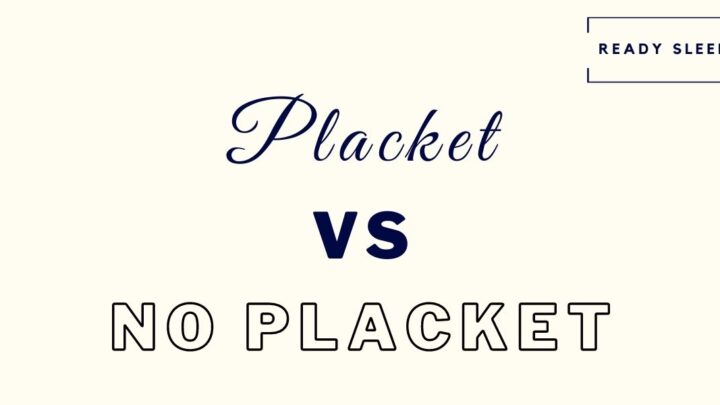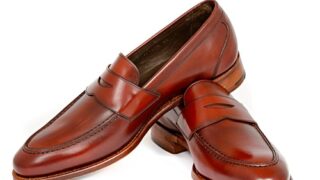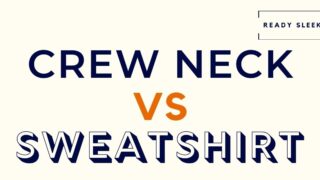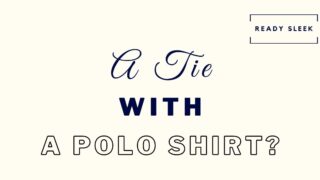There are few sartorial debates quite as fiery as this one. While personal preference is important, there are definitely certain factors that may lead you to choose one over the other. So, placket or no placket – which should you choose?
Shirts with a standard placket are a better option for a more casual-looking shirt that can easily be worn without ties. Shirts with no placket (i.e French plackets) have a more formal and modern appearance as they have no visible seam, but they should usually be worn with ties.
Although that’s the gist, it’s important to dig deeper to really understand the key differences between the two. Once you’ve got to grips with that, we’ll go through how to choose between them in the most effective way possible.
Let’s get to it.
Placket Vs No Placket – What’s The Difference?
The shirt placket is the vertical strip of fabric on the shirt where the buttonholes are. They’re usually built using more than one layer of fabric. But what’s the difference between a shirt with a placket and a shirt with “no placket”?
“Standard” plackets are where the fabric is folded and stitched to create a visible seam along the edge of the placket. “No placket” shirts (a.k.a French plackets or “plain” plackets) have no seam or stitching to distinguish them from the rest of the shirt.
So, the important point here is that there is technically no such thing as a shirt with no placket.
All shirts will have a placket. It’s just that those with a “standard” placket have stitching to clearly mark out the placket, while those with “French” plackets do not have this stitching.
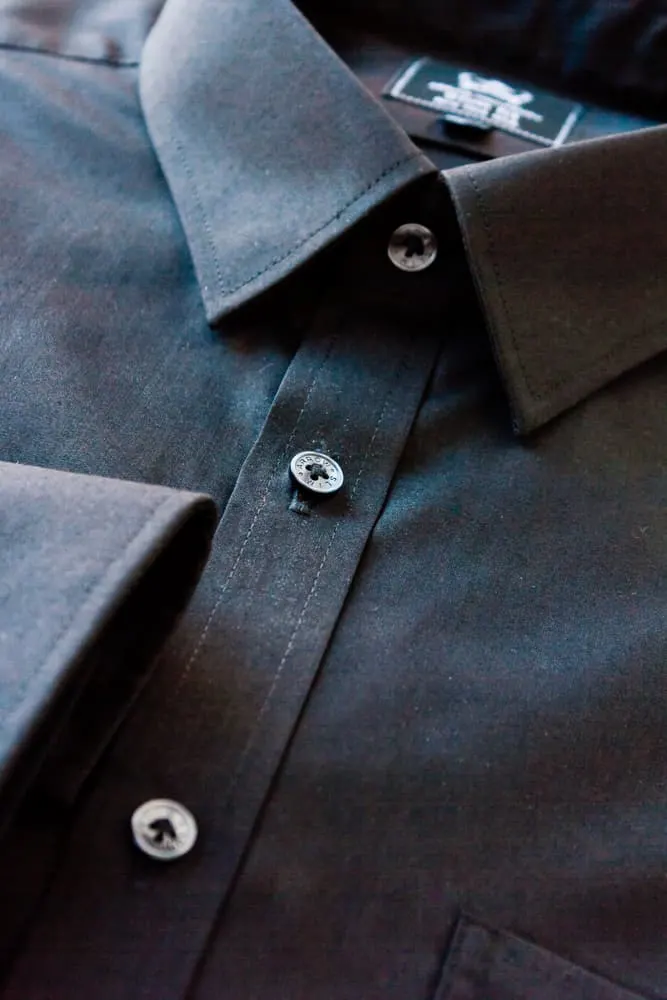
Image From Deposit Photos
Because of this, shirts with French plackets are sometimes called “no placket” shirts, simply because the placket isn’t visible.
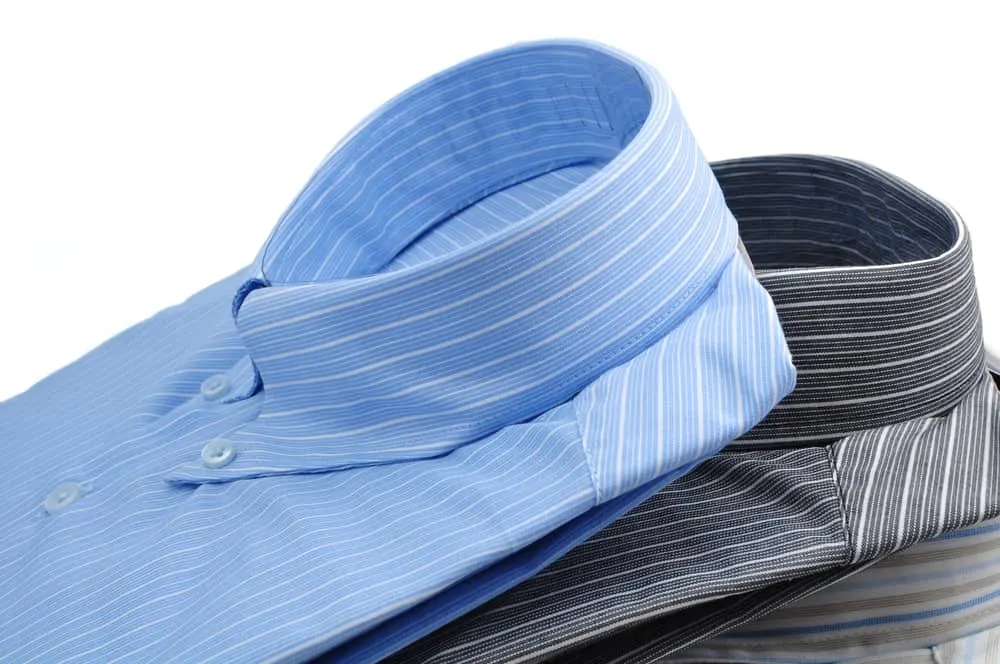
Image From Deposit photos
Now that you know the difference between the two and hopefully have a better understanding of the (often confusing) terms, it’s time to decide between the two.
Placket Vs No Placket – How To Choose
When choosing between a standard placket shirt and a “no placket” (French placket) shirt, consider the following factors.
You’ll probably find certain factors more important than others, but there’s a good chance those factors will probably swing it for you either way.
1. Formality
Shirts with no visible placket (French plackets) are considered to be more “formal” looking than those with standard, visible plackets.
The main reason for this is that it’s a more clean-cut and uniform look, as there’s no stitching visible to clearly demarcate the placket and distinguish it from the rest of the shirt.
From a front-on view, all you can really see is a flat-front shirt with a row of buttons down the middle, with no stitching going down alongside it.
More “casual” shirts such as Oxford shirts (OCBDs) often have standard plackets – it’s one of the key reasons why they often have a more casual aesthetic. This, in addition to the rugged texture of Oxford cloth, of course.
While you can find plenty of formal dress shirts with a standard placket, those with no visible placket (a French placket) tend to look more formal.
This topic is hotly debated, however. There are those that refuse to wear anything other than a standard placket, even with formal attire. This is also perfectly acceptable.
It just may not look as clean-cut from front-on.
2. Tie Or No Tie
If you’re not wearing a tie, it’s generally best to avoid wearing a shirt with no visible placket.
There are a couple of different reasons for this.
One is that these “no placket”/French placket shirts often look awkward without a tie. It can look quite incomplete, as it’s generally considered a more formal look.
In addition, without a standard placket, the shirt collar can look floppy and lacks structure when it isn’t worn with a tie.
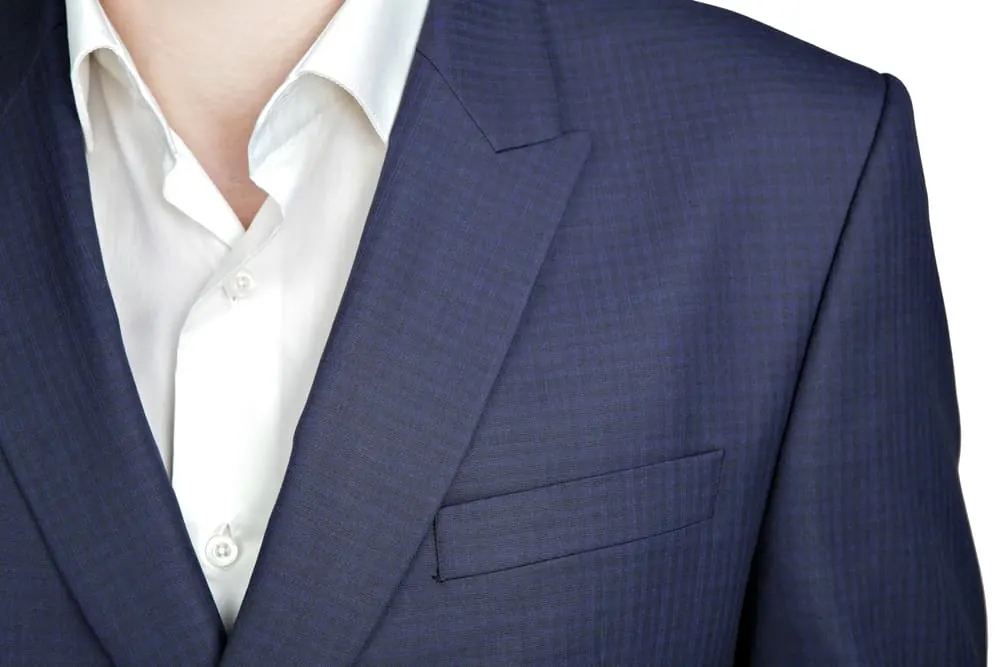
Image From DepositPhotos
Standard plackets often look great without a tie – take Oxford shirts for example. Even without a tie, they can be kept relatively upright, look symmetrical, and feel rigid.
You could even argue that shirts with standard plackets are more versatile, even if you don’t like the look of the placket with a formal suit.
The reason for this is that when you’re wearing a suit, for instance, you’ll also be wearing a tie. If you’re wearing a tie, you won’t be able to see the seam details of a standard placket in any case.
But the shirt could also stand on its own without a tie, simply because the standard placket would provide enough structure and rigidity to not look award.
3. French Cuffs
Many people prefer shirts with no visible placket when that shirt happens to have French cuffs as well.
The reason for this is that French cuffs are a very formal feature for a dress shirt to have.
The casual nature of a standard placket can sometimes feel like it conflicts with the formal nature of French cuffs.
Once again, this isn’t a hard and fast rule. However, it might be something that you actually notice.
You’ll often find that dress shirts with French cuffs often have no visible placket (i.e a French placket). Overall, it makes the dress shirt look more formal and more clean-cut.
This one is pretty easy to remember. French cuffs – they often go well with French plackets.
4. Traditional Vs Modern
Standard plackets have a more traditional appearance than non-visible, French plackets which are relatively modern in comparison.
In fact, historically, plackets were usually made from entirely separate strips of cloth. These were then sewn onto the shirt itself.
These days, plackets aren’t created from separate pieces of cloth. Instead, the fabric is simply folded over.
With standard plackets, this fold is clearly visible due to the stitching. With French plackets, the fold is much less visible as there is no stitching or seam.
Ultimately, if you wanted a shirt with a more modern appearance, a French placket may be for you. It shouldn’t be the only factor you consider. But if you read the other factors and you’re still torn, it may be the one to influence you either way.
5. Personal Taste
A key reason why this topic is so divisive is that people just tend to have a strong like or dislike for one or the other, simply due to the way they look.
Some people hate the way a no-placket/French placket looks, while others love it.
Some people hate the way a standard placket looks, while others refuse to wear anything else.
It doesn’t come down to functionality or formality for them. It’s simply because they’re drawn to the look of one and thoroughly dislike the look of the other.
There’s a chance this applies to you too. You may not have had such strong feelings with regards to their aesthetics before reading this article. But you may well have them now.
If this is true – it’s completely fine. Don’t fight your instincts.
6. Ease Of Buttoning
The doubled-up, folded-over fabric of a standard placket is easier to generally easier to button.
It’s a minor detail to most, but for some, a French placket may be a bit of a nuisance for this very reason.
Standard plackets are more rigid and have more structure. They’re easier to grip and therefore easier to button. You won’t exactly find it difficult to button a French placket.
At the end of the day, a French placket is still a placket – albeit an invisible one.
But the rigidity that a standard placket gives you just makes it easier to handle. They’re often considered more functional than French plackets, even if all they save you is an extra 10 to 20 seconds each time you try to button it.
7. Body Size
Those with a larger body size – more specifically, a wider torso – often prefer the look of a standard placket shirt over a French placket.
This is because the visible seam details of a standard placket often have a slimming effect when viewed from front-on.
It’s due to the vertical line of stitching that standard plackets have. It splits the shirt into two, giving the illusion that the torso is slimmer than it actually is.
Compare this with a French placket shirt where the placket isn’t visible. The entire shirt just looks more uniform and doesn’t give you the slimming benefit that the stitching of a standard placket would have.
8. Ironing
While this won’t be that big of a deal to most, it’s important to note that the flat-front, non-visible, French placket is easier to iron than a standard placket.
This is simply because you’ve got an additional seam to worry about when ironing.
It’s more difficult to get a perfect, creaseless appearance between the buttons and vertically alongside the buttons for this reason.
When the shirt you’re wearing is pretty casual in any case – like an OCBD – it doesn’t really matter.
But if it’s a dress shirt, you’re pretty likely to want a nice and creaseless end result, so it’s worth considering.
Conclusion
There you have it. Hopefully, everything you needed to know about standard placket shirts and no-placket (French placket) shirts. The differences, and how to choose between them.
Enjoy.
Ready Sleek founder. Obsessed with casual style and the minimalist approach to building a highly functional wardrobe. Also a fan of classic, vintage hairstyles.

